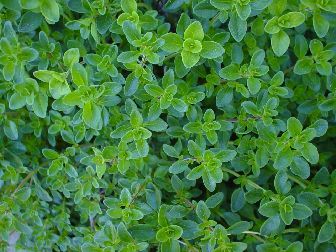|
|
There are over 100 different
species of thyme, but the two main types are Common Thyme, also known by
its latin name Thymus Vulgaris, and Creeping Wild Thyme, Thymus
serpyllum. As its name indicates, creeping wild thyme prefers
to creep along the ground. It is sometime referred to as simply creeping
thyme or wild thyme.
Creeping Wild Thyme
- Thymus serpyllum
The flowers
of Creeping Wild Thyme are very small, colored purple or pinkish purple.
They are pleasantly fragrant, clustered at the ends of the branches or
in leaf axils. The plants have a hairy calyx and corolla. Leaves
are oblong, and aromatic. The stem is 4 to 12 inches long (10 to
30 centimeters), and creeps along the ground rather than rises vertically.
The plant is woody and branched, forming dense cushions.

Picture of Creeping Wild Thyme
The
preferred habitat of Creeping Wild Thyme is the light soil of banks, roadsides
and dry meadows where it can get good sunlight. This plant prefers
alkaline soil which may be slightly sandy. It's flowering Season
is June to September.
Creeping
Wild Thyme as alternative to a Grass Lawn
Creeping
Thyme can be a good alternative to grass and will provide you with an attractive
lawn. It can be walked on and will survive well. One huge advantage
is that unlike grass which needs constant mowing, Creeping Wild Thyme doesn't
need cutting. Just give it a weeding every now and then and you'll
have a gorgeous thyme lawn which smells wonderful. Camomile also
serves well in creating a nice lawn, or if you put both thyme and camomile
together you will get a nice fresh smell similar to the aroma of bubblegum.
|